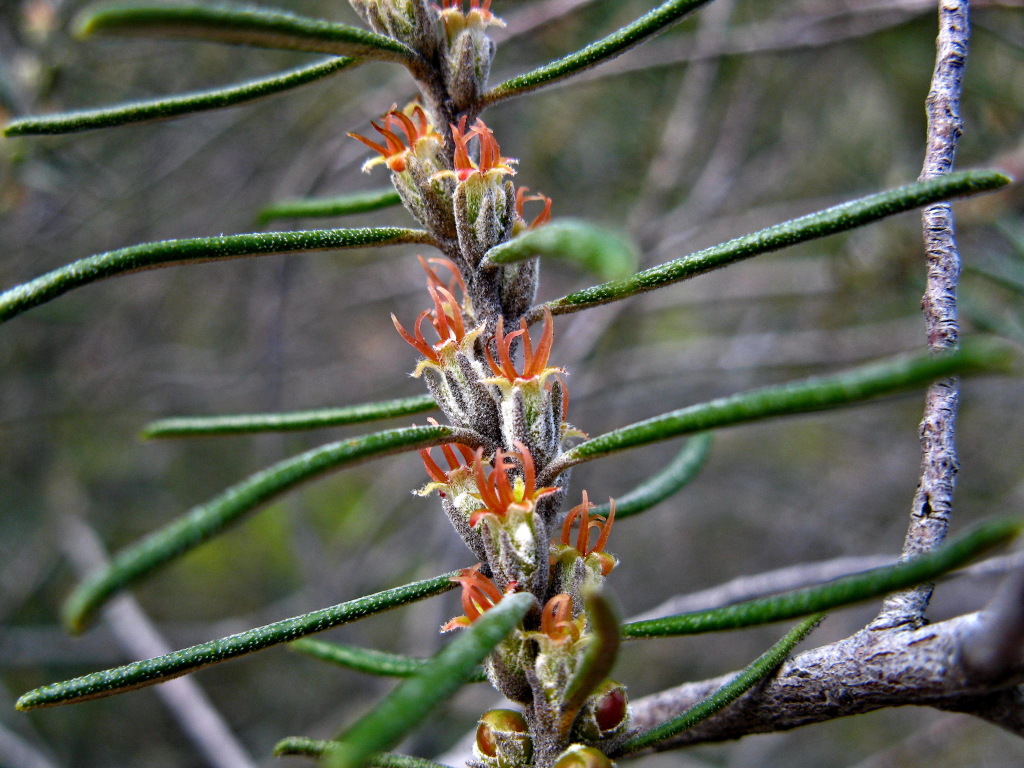Bertya
Shrubs, monoecious or subdioecious, often resinous, glabrous or stellate-tomentose. Leaves usually alternate, simple, margins entire, recurved, revolute or flat, usually shortly petiolate; stipules absent. Flowers usually solitary, axillary, pedunculate to subsessile; bracts 2–10, calyx-like, persistent or caducous. Male flowers usually with 4 or 5 imbricate petaloid segments; petals and glands absent; stamens numerous, filaments fused in a central column, anthers 2-celled, dehiscing longitudinally. Female flowers with perianth segments smaller and narrower than those of males, sometimes enlarged around fruit; ovary 3-celled, sessile, ovules 1 per cell, styles usually 3, almost free, deeply lobed. Fruit an ovoid or obloid capsule; seed obloid to subglobose, solitary by abortion, smooth, caruncle present.
About 28 species, all endemic to Australia.
Jeanes, J.A. (1999). Euphorbiaceae. In: Walsh, N.G.; Entwisle, T.J., Flora of Victoria Vol. 4, Cornaceae to Asteraceae, pp. 55–82. Inkata Press, Melbourne.
 Spinning
SpinningHalford, D.A.; Henderson, R.J.F. (2002). Studies in Euphorbiaceae A.L.Juss. sens. lat. 3. A revision of Bertya Planch. (Ricinocarpeae Muell. Arg., Bertyinae Muell.Arg.). Austrobaileya 6(2): 187–245.



